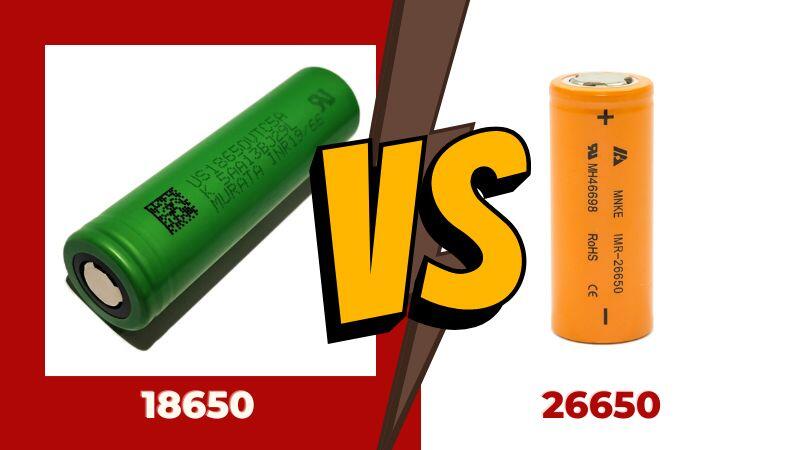Rechargeable batteries have revolutionized the way we use portable electronic devices. From smartphones to power tools, these batteries have become an essential part of our daily lives. However, with so many different types and sizes of batteries available in the market, it can be challenging to choose the right one for your needs. This is where the comparison between 18650 and 26650 batteries becomes important. Understanding the similarities and differences between these two types of batteries can help you make an informed decision when selecting a battery for your device or application. In this article, we will delve deeper into the features, advantages, and disadvantages of both 18650 and 26650 batteries, and explore their potential applications.
What are 18650 batteries?
18650 batteries are one of the most common lithium-ion rechargeable batteries. These batteries are cylindrical and have a diameter of 18mm and a length of 65mm, hence the name 18650. They were originally designed for use in laptops, but they are now used in a wide variety of applications, including flashlights, power tools, and electric vehicles.
What are 26650 batteries?
26650 batteries are larger in size and have a diameter of 26mm and a length of 65mm. They were developed to provide more power and longer run time than 18650 batteries. 26650 batteries are commonly used in high-power flashlights, electric vehicles, and other applications that require high power output.
Check also – 18650 vs 21700 Batteries: What are the Differences?
Similarities between 18650 and 26650 batteries
Both 18650 and 26650 batteries are lithium-ion rechargeable batteries, which means they can be charged and discharged multiple times. They both have a similar chemical composition and use the same type of cathode and anode materials. Additionally, both batteries can deliver high power output and have a long service life.
Differences between 18650 and 26650 batteries
The main difference between 18650 and 26650 batteries is their size. 26650 batteries are larger in diameter and have a larger capacity than 18650 batteries. This means that 26650 batteries can hold more energy and can deliver more power than 18650 batteries.
Capacity
18650 batteries typically have a capacity of between 1500mAh to 3600mAh, while 26650 batteries have a capacity of between 4000mAh to 6000mAh. This means that 26650 batteries can store more energy than 18650 batteries and can provide longer run times.
Size
The larger size of 26650 batteries means that they are more suited to applications that require high power output over an extended period. However, the larger size also means that they are not as widely used as 18650 batteries and may not fit into all devices.
Weight
26650 batteries are heavier than 18650 batteries due to their larger size and higher capacity. This can make them less suitable for applications where weight is a concern, such as portable electronic devices.
Price
26650 batteries are generally more expensive than 18650 batteries. This is because they have a larger capacity and require more materials to manufacture.
Conclusion
In summary, both 18650 and 26650 batteries are lithium-ion rechargeable batteries that can deliver high power output and have a long service life. The main difference between the two is their size, with 26650 batteries being larger and having a larger capacity than 18650 batteries. 26650 batteries are more suitable for applications that require high power output over an extended period, while 18650 batteries are more widely used and can fit into a wider range of devices. When choosing between the two, it is important to consider the specific requirements of your application and choose the battery that best meets those needs.




